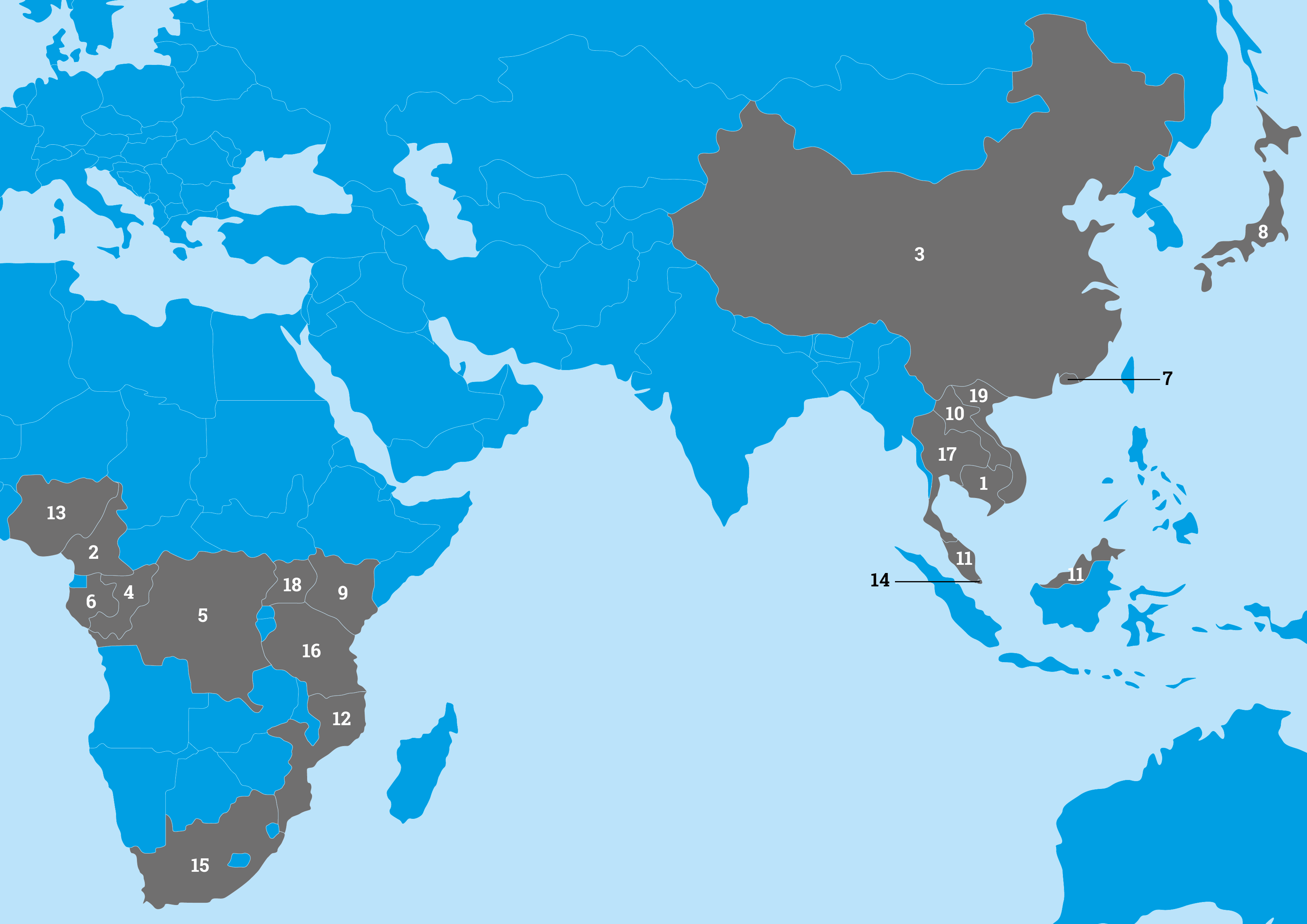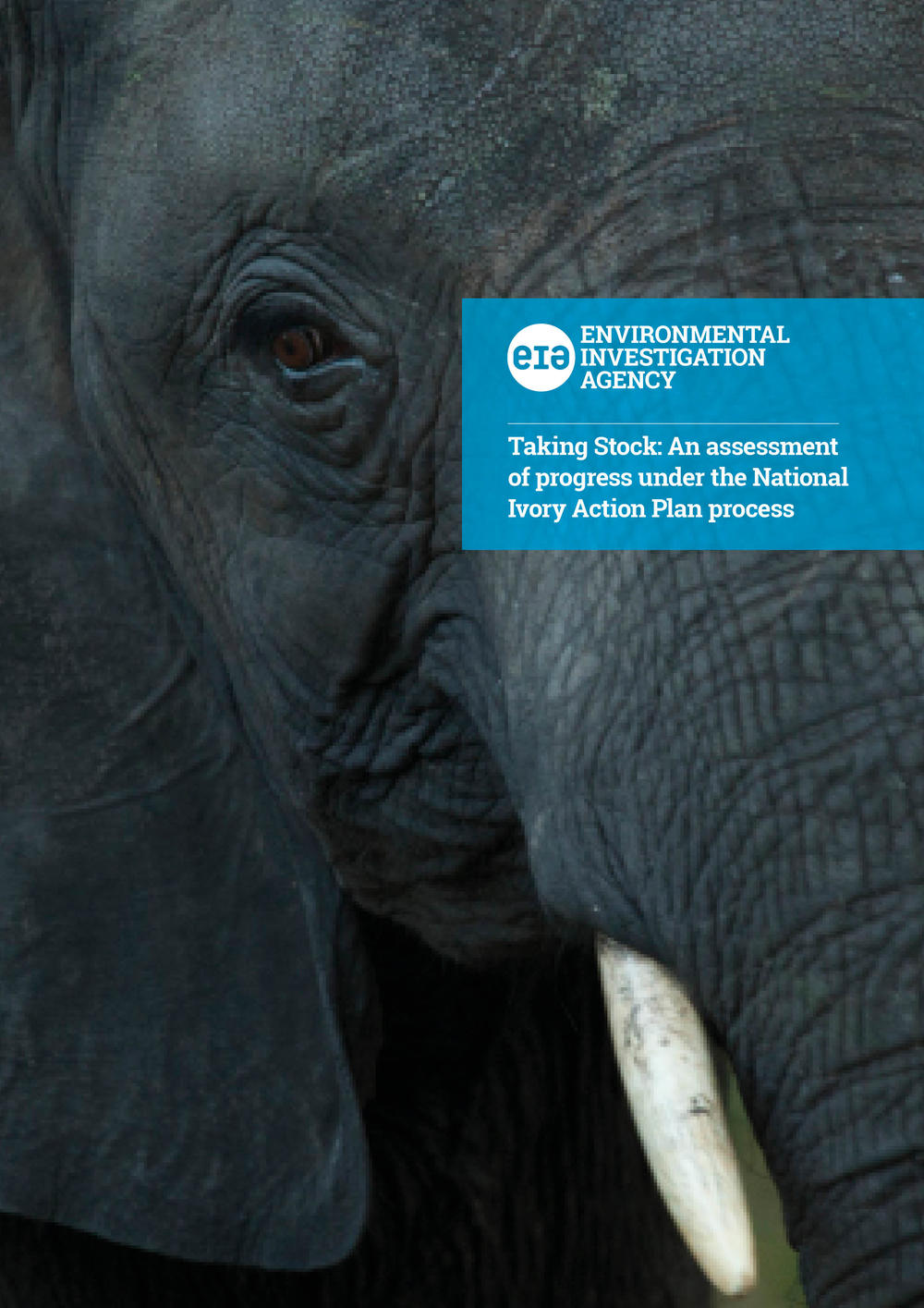Summary
The National Ivory Action Plan (NIAP) process under the Convention on International Trade in Endangered Species of Wild Fauna and Flora (CITES) is an important framework developed in response to the elephant poaching crisis which continues in Africa – the worst that the continent has experienced since the 1970s and 1980s. The NIAP process is a very useful initiative which, if implemented properly, should contribute significantly to a reduction in elephant poaching and the illegal trade in ivory.
The NIAP process has prompted important progress in some countries participating in the process. However, the NIAP process is still relatively in its infancy and as such, weaknesses are still being identified and improvements should be made.
This Report is intended to support CITES decision-making in relation to the NIAP process. It recognises that progress is being made by highlighting examples of best practice by Parties. It sets out recommendations for improvements to the NIAP process itself, recommendations for revision/priority implementation of existing NIAPs and recommendations that certain Parties should be asked to develop NIAPs.
Summary
The National Ivory Action Plan (NIAP) process under the Convention on International Trade in Endangered Species of Wild Fauna and Flora (CITES) is an important framework developed in response to the elephant poaching crisis which continues in Africa – the worst that the continent has experienced since the 1970s and 1980s. The NIAP process is a very useful initiative which, if implemented properly, should contribute significantly to a reduction in elephant poaching and the illegal trade in ivory.
The NIAP process has prompted important progress in some countries participating in the process. However, the NIAP process is still relatively in its infancy and as such, weaknesses are still being identified and improvements should be made.
This Report is intended to support CITES decision-making in relation to the NIAP process. It recognises that progress is being made by highlighting examples of best practice by Parties. It sets out recommendations for improvements to the NIAP process itself, recommendations for revision/priority implementation of existing NIAPs and recommendations that certain Parties should be asked to develop NIAPs.
NIAP country profiles
NIAP country profiles
Recommendations
Party NIAP status
- Change the status of DRC, Lao, Mozambique and Japan from Category C to Category A
- Request Japan, Singapore and South Africa to develop NIAPs
NIAP Process
- The CoP has called for all NIAPs to be published on the CITES website and this should be implemented.
- Existing NIAPs should be revised to reflect the criteria in the NIAP Guidelines and the templates provided for NIAPs.
- Postal ballots should no longer be used to decide whether a Party should enter or exit the NIAP process.
- All countries participating in the NIAP process should be specifically requested to submit their annual illegal trade reports in time for the meeting of the SC (the current deadline is October each year, which means that reports – if provided at all – may not be available for the SC).
- The SC could consider requesting the CITES Secretariat to establish a technical advisory group consisting of independent experts (such as from ICCWC members, relevant non-governmental organisations and other experts) with expertise in one or more of the five pillars of the NIAP process. The group would be responsible for assisting the Secretariat at all stages of the NIAP process, as described more fully below.
- The reasons for a Party entering the process should be clearly identified. Firstly, to help the Party in developing its NIAP and secondly, to provide the background for the later decision on whether a Party has done enough to exit the process. Effectively, the criteria for exit should be the reverse of the criteria for entering the process.
- Exit from the NIAP process should be underpinned by demonstrating impact by using the performance indicators included in the NIAP Guidelines – reducing poaching, increasing prosecution etc. Where a Party has achieved a significant number of actions in its NIAP but is yet to demonstrate such impact, there may be a need to revise its NIAP and/or to reduce its reporting obligations to address only the relevant indicators.
- The use of independent experts is critical at three stages: (1) identifying countries that should enter the NIAP process and develop a NIAP, (2) progress made in implementing the NIAP, and (3) identifying countries that have implemented the NIAP and are no longer a country of concern, enabling their exit from the process.
Recommendations
Party NIAP status
- Change the status of DRC, Lao, Mozambique and Japan from Category C to Category A
- Request Japan, Singapore and South Africa to develop NIAPs
NIAP Process
- The CoP has called for all NIAPs to be published on the CITES website and this should be implemented.
- Existing NIAPs should be revised to reflect the criteria in the NIAP Guidelines and the templates provided for NIAPs.
- Postal ballots should no longer be used to decide whether a Party should enter or exit the NIAP process.
- All countries participating in the NIAP process should be specifically requested to submit their annual illegal trade reports in time for the meeting of the SC (the current deadline is October each year, which means that reports – if provided at all – may not be available for the SC).
- The SC could consider requesting the CITES Secretariat to establish a technical advisory group consisting of independent experts (such as from ICCWC members, relevant non-governmental organisations and other experts) with expertise in one or more of the five pillars of the NIAP process. The group would be responsible for assisting the Secretariat at all stages of the NIAP process, as described more fully below.
- The reasons for a Party entering the process should be clearly identified. Firstly, to help the Party in developing its NIAP and secondly, to provide the background for the later decision on whether a Party has done enough to exit the process. Effectively, the criteria for exit should be the reverse of the criteria for entering the process.
- Exit from the NIAP process should be underpinned by demonstrating impact by using the performance indicators included in the NIAP Guidelines – reducing poaching, increasing prosecution etc. Where a Party has achieved a significant number of actions in its NIAP but is yet to demonstrate such impact, there may be a need to revise its NIAP and/or to reduce its reporting obligations to address only the relevant indicators.
- The use of independent experts is critical at three stages: (1) identifying countries that should enter the NIAP process and develop a NIAP, (2) progress made in implementing the NIAP, and (3) identifying countries that have implemented the NIAP and are no longer a country of concern, enabling their exit from the process.
CITES National Ivory Action Plans (NIAP)
Download the full report, detailing the results for all countries
CITES National Ivory Action Plans (NIAP)
Download the full report, detailing the results for all countries



